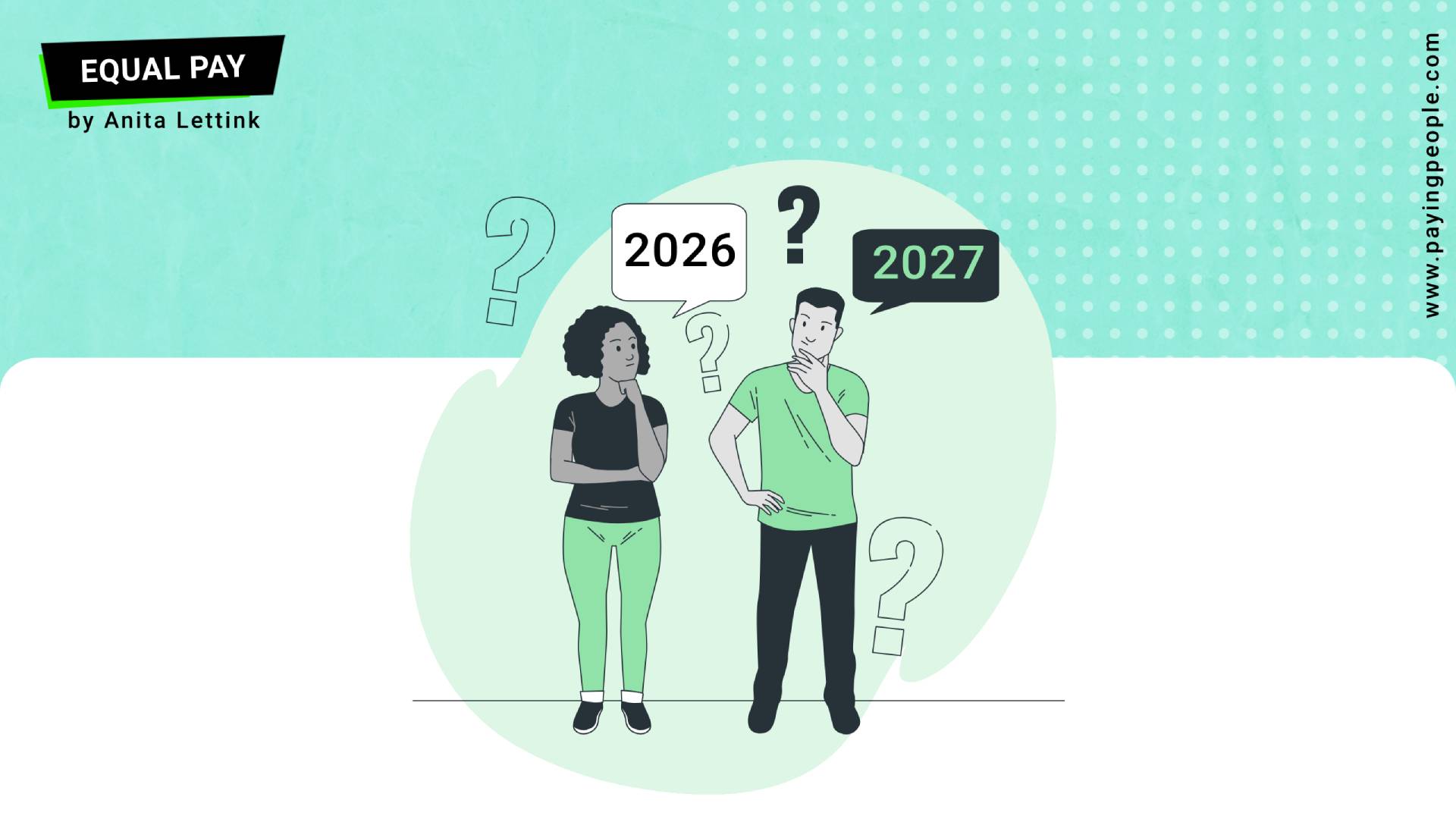EU Pay Transparency Directive: Clearing Up the 2026 vs 2027 Confusion
You’ve probably seen conflicting information about when the EU Pay Transparency Directive actually kicks in. Some sources mention 2026, others talk about 2027, and it’s no wonder people are confused. Let me break down the dates so you can plan accordingly.
When does the EU Pay Transparency Directive actually become law?
The directive has technically been in force since June 6, 2023. However, EU member states have until June 7, 2026, to transpose it into their national laws. This is what’s called the “transposition deadline.”
When the EU approves a Directive, it defines specific goals that member states must achieve (like the max 5% gender pay gap or reporting deadlines). At the same time, a Directive gives countries some flexibility to decide how to implement these goals through their own national laws. When you see “June 2026” mentioned, that’s the deadline for countries to write their own national legislation based on the EU directive. From that point on, national rules on pay transparency will apply, but the exact requirements and starting points will (slightly) differ per country.
When do companies actually have to start complying with the requirements?
This is where it gets interesting. It depends on how each member state chooses to implement the directive. Once the national law is in place (by June 2026 at the latest), companies will need to comply with the requirements from the date that law comes into force in their country. There’s no one-size-fits-all start date across Europe as national timelines will vary, so watch your local legislation closely, knowing that June 2026 is the last month.
Also, the compliance dates depend on what specific requirement we’re talking about:
Pay transparency requirements (like disclosing salary ranges prior to interviews and providing pay information to employees) should be in place by June 7, 2026, once member states have implemented their national laws.
Gender pay gap reporting, however, has different timelines based on company size. Employers with 150 or more employees will need to submit their first gender pay gap report by June 7, 2027 at the latest, reporting on the calendar year of 2026.
The reality is: 2026 is when the law becomes active, and 2027 is when the first reporting kicks in. You need to be ready for both. Note that these are final dates and your company may choose to implement requirements and start reporting at any moment before the deadlines.
What if your country hasn’t published a draft legislation yet?
Because of the local transposition, requirements might be slightly different between countries. From what I’ve seen so far in draft releases, countries are staying very close to the Directive. If your country has not released anything yet, don’t wait until they do. Time is running out, and the requirements about transparency, job descriptions, job architectures and salary bands are straightforward: you know what to do.
What’s happening in June 2027 exactly?
June 7, 2027 is when the first mandatory gender pay gap reports are due for larger companies. Specifically:
- Employers with at least 250 employees begin reporting in June 2027 for 2026 and reports are required annually
- Employers with 150-249 employees begin reporting in June 2027 for 2026 and reports are required every three years
- Employers with 100-149 employees begin reporting in June 2031 for 2030 and will report every three years
Companies with fewer than 100 employees are currently exempt from mandatory reporting, though they still need to comply with transparency and equal pay requirements once the national law is in place.
The key point here is that (if applicable) your first report will be based on 2026 salary data, which is why you need to start preparing now if you haven’t already.
Why are there different dates for different company sizes?
The EU designed a staggered approach to ease the administrative burden. Reporting deadlines depend on organization size. First reports for employers with 150+ employees are due June 6, 2027, while smaller companies get more time to prepare. Companies with fewer than 100 employees don’t have reporting obligations, although they could be subject to more stringent local requirements.
The logic is straightforward: larger companies typically have more resources and established HR systems to handle complex reporting requirements. Smaller companies get additional time to build the necessary infrastructure and processes.
What should you be doing right now to prepare?
Here’s the reality check: since the first report is based on 2026 salaries, the next compensation cycle may be your last chance to make changes before your pay gap data is “locked in” for public reporting.
You should be:
- Establishing objective, gender-neutral pay criteria as required by the directive
- Preparing your job architecture to facilitate role comparisons for equal value assessments
- Evaluating your compensation structure to make sure all elements of compensation are included
- Conducting pay equity analyses now to identify and address any gaps before they become public
- Training your HR team on the new transparency requirements for job postings and employee requests
The bottom line is this: while the legal deadlines might seem like they give you time, the practical reality is that your 2025 compensation decisions will determine what you’re reporting in 2027. The time to act is now, not when the deadlines arrive.
Don’t wait until 2026 to start thinking about compliance. The companies that begin preparing today will have a significant advantage when the requirements take effect.

